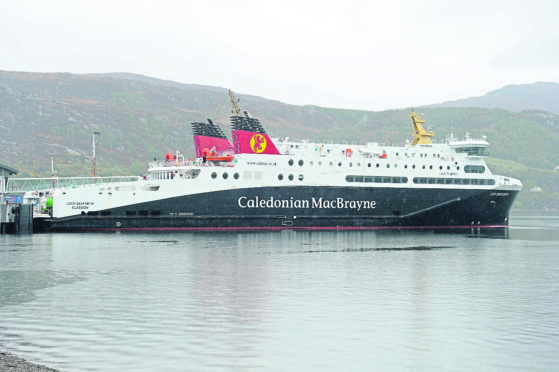A ferry service to the Western Isles will cost taxpayers at least £67 million by 2022 – but bankers will still own the 700-passenger ship.
The MV Loch Seaforth was leased by ferry operator CalMac from banking giant Lloyds in 2014, with transport chiefs initially keeping details of the taxpayer-funded deal secret.
Now it has emerged the eight-year lease will cost around £36 million, on top of £31 million spent on upgrading harbours to accommodate the boat.
The deal struck with Lloyds does not allow CalMac to buy the vessel in 2022 and it is understood the terms of the contract also mean the ship has to be returned “as new”.
This means that in less than four years’ time the ferry operator will need to negotiate a new lease or find a replacement vessel for the Stornoway to Ullapool route.
The £42 million MV Loch Seaforth broke down earlier this month halfway to Stornoway, leaving 343 passengers and crew stranded for hours before power was partially restored.
Transport consultant Roy Pedersen, a retired SNP councillor and serving member of the Scottish Government’s expert ferry group said: “Since its formation, Caledonian MacBrayne has always been secretive about its costs and we deserve a lot more openness about this deal.
“We know from the leasing deal for the NorthLink ferries (which serve the Northern Isles) that the bank involved there, RBS, did very well out of that so it would not be surprising to see Lloyds cashing in as well.”
Mr Pederson, who has written two books about Scotland’s ferries and was the architect of the Road Equivalent Tariff ferry subsidy scheme, added: “There has to be real questions about the decision to go down this road with the Seaforth lease, especially when you consider the cost of the harbour upgrades, the increased demand and the fact we don’t know what will happen in 2022 when the lease runs out.”
The 380ft Stornoway to Ullapool ferry came into service in 2014.
Islanders say their requests for a two-ferry service were ignored as a single, privately-financed ferry was ordered.
Lloyds Bank now owns the ship and leases it to the Caledonian Maritime Assets (CMAL), who manage the ferries.
CMAL is owned by the Scottish Government and in turn leases the vessel to publicly-owned operator CalMac.
The body has always cited “commercial confidentiality” for not revealing the full cost of the Seaforth deal.
Shipping specialist Professor Alf Baird, another serving member of the Scottish Government’s expert ferry group, said: “We seem incapable of making sensible decisions when it comes to the public procurement of ferries in this country.
“The Seaforth deal stands out because of all the upfront harbour costs you had but also the expensive way to access the finance and the fact they don’t currently have the option to buy the vessel at the end of the lease.
“I have likened this to a Private Finance Initiative deal as it seems it is the banks who do the best out of it and it all talks to a wider problem – our ferries are run more like a government department than a shipping company and the inefficiencies of this are clear for everyone to see.”
Highlands and Islands Green MSP John Finnie, who sits on Holyrood’s transport committee, said the revelations raised questions about not adopting a two-boat strategy for the route.
“It’s clear that constituents who wanted two ferries, rather than one large ferry like the MV Seaforth, on the Ullapool Stornoway route have been vindicated.
“Much less clear is the murky waters that represent the funding arrangements employed by CMAL and where we go from here.”
